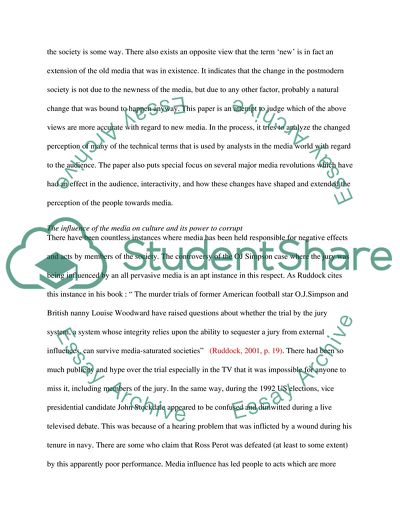Cite this document
(What Is Modern Media Coursework Example | Topics and Well Written Essays - 3000 words, n.d.)
What Is Modern Media Coursework Example | Topics and Well Written Essays - 3000 words. Retrieved from https://studentshare.org/media/1721498-do-new-media-forms-and-technologies-require-the-re-thinking-of-our-conceptions-of-audiences-and-media-consumption
What Is Modern Media Coursework Example | Topics and Well Written Essays - 3000 words. Retrieved from https://studentshare.org/media/1721498-do-new-media-forms-and-technologies-require-the-re-thinking-of-our-conceptions-of-audiences-and-media-consumption
(What Is Modern Media Coursework Example | Topics and Well Written Essays - 3000 Words)
What Is Modern Media Coursework Example | Topics and Well Written Essays - 3000 Words. https://studentshare.org/media/1721498-do-new-media-forms-and-technologies-require-the-re-thinking-of-our-conceptions-of-audiences-and-media-consumption.
What Is Modern Media Coursework Example | Topics and Well Written Essays - 3000 Words. https://studentshare.org/media/1721498-do-new-media-forms-and-technologies-require-the-re-thinking-of-our-conceptions-of-audiences-and-media-consumption.
“What Is Modern Media Coursework Example | Topics and Well Written Essays - 3000 Words”, n.d. https://studentshare.org/media/1721498-do-new-media-forms-and-technologies-require-the-re-thinking-of-our-conceptions-of-audiences-and-media-consumption.


